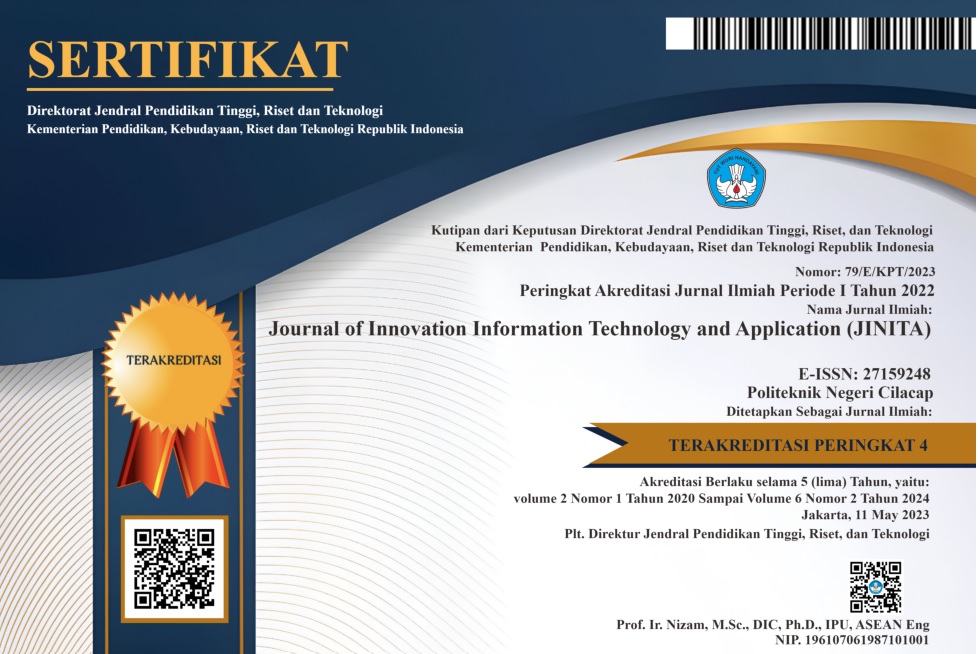Sistem Monitoring Pintu Air Bendungan Menggunakan Mikrokontroler Wemos D1 R1 Berbasis Website
 Abstract views: 892
,
Abstract views: 892
,
 PDF (Bahasa Indonesia) downloads: 594
PDF (Bahasa Indonesia) downloads: 594
Keywords:
Monitoring, floodgates, Website
Abstract
Floodgate monitoring is related to water level monitoring. Problems that occur Weir information about the water level, water runoff, level, status of floodgates and recap results that can be seen on the web in real-time are not yet available, so monitoring the floodgates is difficult, less effective and maximum. Weir officials must go back and forth from the weir to the guard post and then to the control to move the floodgates. The purpose of the design of a sluice monitoring system is based on the website. Assist officers in monitoring floodgates to make it more effective and maximal. Using Wemos D1 R1 Microcontroller, Ultrasonic Sensor HC-SR04 to read water level, DC Motor moves the floodgates. LCD displays runoff and level. Siren as a danger warning. The trial results show that the system that has been made runs well. The system is able to open the floodgates through control of the web and runs automatically. Water runoff and level can be displayed on the LCD. Weir information about water levels, water runoff, levels, sluice status, and recap results can be viewed on the web in real time.
Published
2022-09-14
Section
Articles
Copyright (c) 2019 Journal of Innovation Information Technology and Application (JINITA)

This work is licensed under a Creative Commons Attribution 4.0 International License.
Authors who publish with this journal agree to the following terms:
- Authors retain copyright and grant the journal right of first publication with the work simultaneously licensed under a Creative Commons Attribution License that allows others to share the work with an acknowledgement of the work's authorship and initial publication in this journal.
- Authors are able to enter into separate, additional contractual arrangements for the non-exclusive distribution of the journal's published version of the work (e.g., post it to an institutional repository or publish it in a book), with an acknowledgement of its initial publication in this journal.
- Authors are permitted and encouraged to post their work online (e.g., in institutional repositories or on their website) prior to and during the submission process, as it can lead to productive exchanges, as well as earlier and greater citation of published work (See The Effect of Open Access).
















